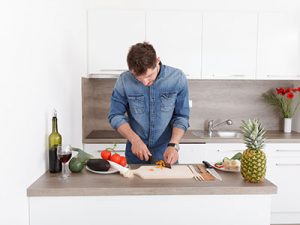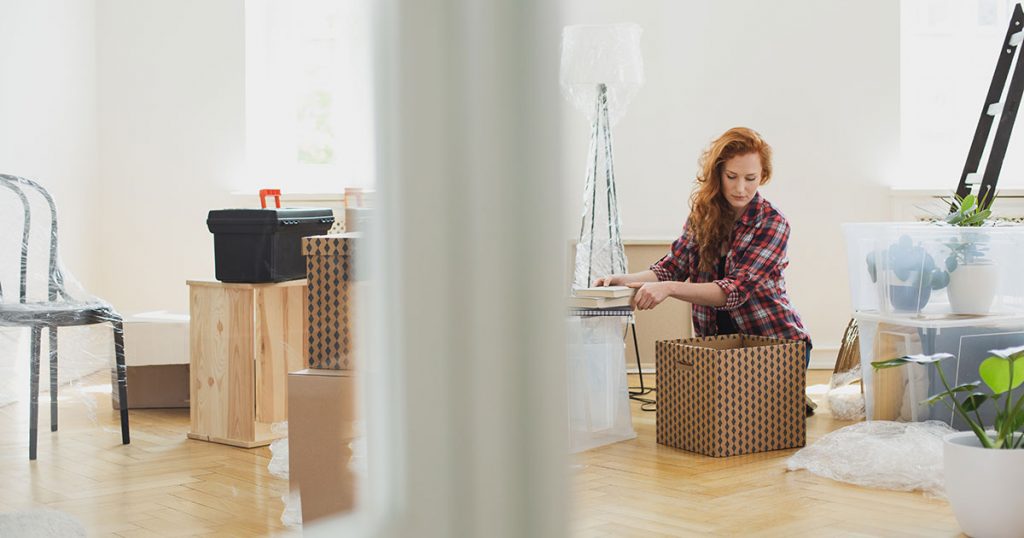For a host of reasons, both cultural and economic, single person households are on the rise across the US. With so much of home and product design geared to larger families, entire industries are having to adjust to the needs and desires of a more independent, aware, and environmentally conscious group of buyers. This paradigm shift affects everything from food and beverage to household goods and more.
The Single Person Household
According to the Wall Street Journal, almost 36 million Americans live alone, representing 28% of households. More than half of all households (59%) consist of only one or two people, and single buyers make up about 51% of total US retail food and beverage sales. According to the National Association of Realtors’ most recent statistics, 18% of homebuyers were single women.
What is driving this trend toward home ownership by singles? According to the Washington Post, there are a variety of factors:
- More than half of 18 to 34 year olds in the US have no steady romantic partner
- Women are marrying later in life and having fewer children
- Women make up the majority of college graduates, medical school students, and law school students. That means they are spending more time working on their careers before settling down.
In addition, Millennials make up a huge demographic cohort and many of them have chosen to travel and pursue personal interests while they’re young, rather than waiting until retirement as previous generations have. That, too, contributes to a tendency to stay single longer.
These trends aren’t only for young first time home buyers, though. People are living longer and staying healthier longer, changing the face of retirement. Single retirees are now choosing to move to exciting, amenity-filled exurban areas where they can pursue hobbies and interests, including non-profit work, second careers, or a return to graduate school.
How This Affects Industry Standards
What does the rise in single person households mean for businesses? Everyone from manufacturers to retailers are downsizing and adjusting their offerings in order to accommodate the new generation of single homeowners.
Everything from the size of appliances to the size of individual product containers, cans, and cartons is being adjusted to accommodate smaller households. This includes smaller loaves of bread, single serving breakfast or dessert cups, and other miniature versions of common products.
The shift has also given rise to a number of services including home meal kit delivery. These dinner for one options leave fewer leftover ingredients, smaller portions, and the chance for a variety in your daily meals. The move away from car ownership in favor of rideshare services is also an interesting change for automakers. These trends speak to a move away from consumption and waste in favor of efficiency and sustainability.
Single User Households and the Wine Industry
 When it comes to alcohol use, Millennial trends point toward declining rates of consumption. And with cannabis legalization on the rise, sober living trending, and up to two-thirds of Millennials seeking to reduce or eliminate alcohol from their diets, the result is a decline in beer and spirits consumption, and slower growth in the wine industry.
When it comes to alcohol use, Millennial trends point toward declining rates of consumption. And with cannabis legalization on the rise, sober living trending, and up to two-thirds of Millennials seeking to reduce or eliminate alcohol from their diets, the result is a decline in beer and spirits consumption, and slower growth in the wine industry.
Some of these same trends are impacting alcohol use among older adults, as well. Health messaging, increased use of prescription drugs, and changes in social lives and tolerance levels among the aging Baby Boomer population are all factors driving a decrease in consumption across the board.
However, the good news for winemakers is that despite a volume decline in wine sales, total sales are going up. This suggests that, though wine drinkers are buying less, they are looking for higher quality – and subsequently higher priced – options when they do drink.
If you’re looking for more information on the health, social, and cultural drivers affecting the wine industry, check out my recent conversation with Rob McMillan, Executive VP and Founder of Silicon Valley Bank’s wine division.
Napa Valley Caters to Singles
With single user households driving food and beverage sales overall, and the wine industry in particular, it’s no surprise that Napa Valley offers an exceptional lifestyle for single men and women who choose to buy here. With world-class wineries and restaurants, single oenophiles will love living at the center of the wine universe.
Cultural, art, and performing arts events, including Festival Napa Valley, provide single homeowners with a never-ending array of opportunities to get out and enjoy the sights, sounds, and tastes of this luxurious lifestyle. Joining Meadowood Resort and Solage are also great ways to meet locals and other second homeowners.
If you are a single home buyer, it’s important that you partner with a broker who can provide the best possible advice and insight for your home purchase. If you’re concerned about investing in an agricultural area and need advice on whether or not it’s for you, give me a call. My focus is on guiding buyers through the maze of complexities that come with acquiring vineyards and wineries in Napa, St. Helena, Calistoga, Yountville, and other areas, while educating them on the best areas, best opportunities for investment growth, and what to be mindful of when acquiring wine country property.




